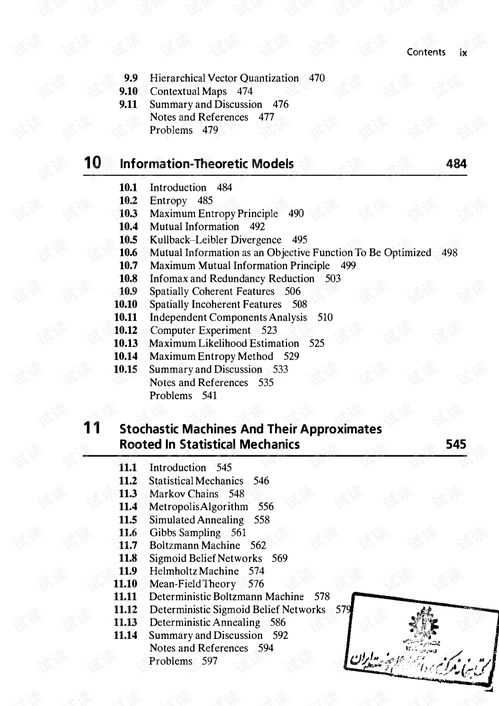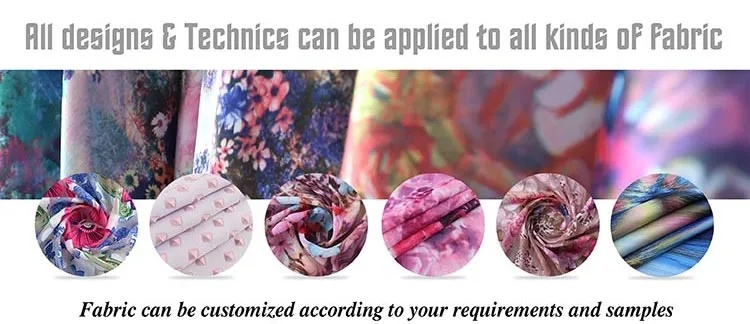Textiles Trade Terms:A Comprehensive Guide for Global Buyers and Sellers
"Textiles Trade Terms: A Comprehensive Guide for Global Buyers and Sellers" is a comprehensive guide that covers various textile trade terms. This guide provides detailed information on the different types of textile trade terms, including spot, forward, futures, options, swaps, and other derivatives. It also covers the basics of textile pricing and how to calculate prices based on different factors such as yarn counts, weight per yard, and yardage. Additionally, the guide provides insights into the different types of textile products and their respective trade terms, including cotton, wool, silk, polyester, nylon, and more. Finally, the guide offers practical tips on how to negotiate textile trade terms effectively and how to manage risks associated with textile trade. Overall, "Textiles Trade Terms: A Comprehensive Guide for Global Buyers and Sellers" is an essential resource for anyone involved in the textile industry, whether as a buyer or seller.
Introduction: Textiles are an essential part of human life, with their use spanning from daily wear to high-end fashion. As the world's largest producer and consumer of textiles, understanding the key trade terms used in the textile industry is crucial for both buyers and sellers. This guide aims to provide a comprehensive overview of the most common textile trade terms, including definitions, examples, and how they are applied in different markets.
-
SAMPLE A sample is a small portion of a product that is given to a buyer to evaluate its quality. It can be used as a basis for making a larger order or to determine if the product meets specific requirements. In the textile industry, samples are often provided by manufacturers or suppliers to help buyers make informed decisions about purchasing.
-
MOQ (Minimum Order Quantity) Moq refers to the minimum quantity required to place an order. It is a negotiation point between buyers and sellers, setting a minimum threshold for the purchase of goods. The higher the moq, the more expensive the product becomes per unit, but it also increases the seller's confidence in the buyer's commitment to the deal.

-
CIF (Cost, Insurance, and Freight) CIF is a term used in international trade to describe the cost of shipping goods from the seller's location to the buyer's location. It includes the cost of goods, insurance, and transportation. This arrangement allows buyers to take responsibility for the cost of transporting the goods, which can be beneficial for businesses operating in remote areas or dealing with high shipping costs.
-
EXW (Ex Works) Exw is a type of export term that requires the seller to ship the goods directly to the buyer's port of shipment. This approach eliminates the need for a middleman, reducing the overall cost of the transaction. However, it may lead to higher freight costs and increased complexity for the seller.
-
FAS (Free Alongside Ship) FAS is another export term whereby the goods are left at the port of shipment until sold. This arrangement offers buyers greater flexibility in selecting a port of shipment, but it also means that the seller bears the risk of unsold goods being left behind.
-
DDP (Delivered Duty Paid) DDP is a payment method whereby the buyer assumes all customs duties and taxes upon delivery of the goods. This arrangement provides buyers with complete control over the payment process, but it also requires them to pay for these fees upfront.
-
FOB (Free On Board) FOB is the most common export term, requiring the seller to pay for all costs associated with loading the goods onto a vessel. This includes freight charges, insurance, and any other expenses incurred during the loading process. Buyers typically have the option to choose a port of shipment based on their needs.
-
EXW (Ex Works) As mentioned earlier, EXW is a type of export term that requires the seller to ship the goods directly to the buyer's port of shipment. This approach eliminates the need for a middleman, reducing the overall cost of the transaction. However, it may lead to higher freight costs and increased complexity for the seller.
-
CIF (Cost, Insurance, and Freight) CIF is a term used in international trade to describe the cost of shipping goods from the seller's location to the buyer's location. It includes the cost of goods, insurance, and transportation. This arrangement allows buyers to take responsibility for the cost of transporting the goods, which can be beneficial for businesses operating in remote areas or dealing with high shipping costs.
-
FAS (Free Alongside Ship) FAS is another export term whereby the goods are left at the port of shipment until sold. This arrangement offers buyers greater flexibility in selecting a port of shipment, but it also means that the seller bears the risk of unsold goods being left behind.
-
DDP (Delivered Duty Paid) DDP is a payment method whereby the buyer assumes all customs duties and taxes upon delivery of the goods. This arrangement provides buyers with complete control over the payment process, but it also requires them to pay for these fees upfront.
-
FOB (Free On Board) FOB is the most common export term, requiring the seller to pay for all costs associated with loading the goods onto a vessel. This includes freight charges, insurance, and any other expenses incurred during the loading process. Buyers typically have the option to choose a port of shipment based on their needs.
Case Study: Let's consider a hypothetical scenario where a textile company wants to export some fabrics to a European market. They would need to decide on the appropriate trade terms based on factors such as the destination country's regulations, the expected price point, and the level of customization required.
If they were looking to sell fabrics directly to consumers in Europe, they might opt for FOB since this allows them to keep more control over the final pricing and packaging. If they were selling to a wholesaler or a retailer, they could choose FOB or CIF, depending on whether they wanted to handle customs duties or not.
In conclusion, understanding the various textile trade terms is crucial for both buyers and sellers in today's globalized marketplace. By choosing the right terms, both parties can negotiate favorable deals and ensure a smooth transition from production to consumption.
纺织品外贸领域涉及众多术语,它们是国际贸易交流的重要桥梁,本文将通过案例分析,结合英文口语表达,全面介绍纺织品外贸术语,帮助读者更好地了解纺织品外贸的流程和规则。
纺织品外贸术语概述

- 纱线与织物:如细纱、织物类型、纱线密度等。
- 品质与等级:如特级、一级、合格等。
- 贸易条款:如FOB、CIF、信用证等。
- 包装与运输:如包装方式、运输方式、保险等。
- 纺织原料:如棉、麻、丝、毛等。
案例分析
纱线品质与等级
在纺织品外贸中,纱线的品质和等级是衡量产品质量的重要指标,某客户需要采购高品质的细纱,我们可以使用以下术语进行交流:
术语解释:高品质的细纱通常指的是纱线强度高、色泽均匀、无杂质的产品。 贸易条款:根据客户的具体需求和交易条件,可以选择FOB或CIF贸易条款。 案例说明:某客户通过我们的外贸平台成功采购了一批高品质的细纱,经过严格的品质检测和检验,确保产品质量符合客户要求。
纺织品贸易流程
纺织品贸易流程涉及多个环节,包括采购、报价、谈判、签订合同、生产与检验、运输与报关等,以下是纺织品贸易流程的英文口语表达:
术语解释:采购是指从国外采购纺织品的过程,报价是指向客户提供产品价格信息。 贸易流程说明:我们与客户进行沟通,了解其需求和交易条件;根据客户需求和交易条件,制定采购计划;我们与客户签订合同,明确双方的权利和义务;我们进行生产与检验,确保产品质量符合要求;我们将产品运送到目的地,完成整个贸易流程。
英文案例说明
纱线品质与等级案例:
在纱线品质与等级方面,我们可以使用以下英文术语进行说明:
术语解释:高品质的纱线通常指的是具有高强度、色泽均匀、无杂质的产品。“High-quality yarn”表示高品质的纱线。 英文案例:某客户采购了一批高品质的棉纱线,经过严格的品质检测和检验,确保产品质量符合客户要求,在贸易过程中,我们与客户保持密切沟通,确保双方权益得到保障。
纺织品贸易流程案例:
在纺织品贸易流程方面,我们可以使用以下英文术语进行说明:
术语解释:纺织品贸易流程包括多个环节,包括采购、报价、谈判、签订合同等。“The textile trade process includes procurement, quotation, negotiation, and contract signing.”表示纺织品贸易流程涉及多个环节。 英文案例:某客户通过我们的外贸平台成功采购了一批高品质的棉织物,整个贸易流程包括与供应商沟通、报价、签订合同等环节,在贸易过程中,我们为客户提供专业的服务和支持,确保客户能够顺利完成交易。
Articles related to the knowledge points of this article:
The Establishment Date of Xingxing Textile Brand
Transforming Textiles with Technological Innovation:The Journey of Rui Rong
Organic Textiles:The Green Solution to Fashion



